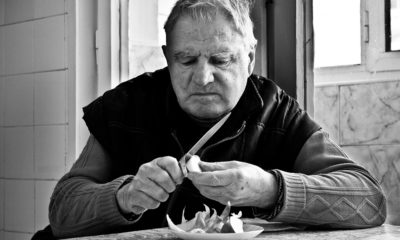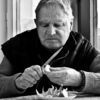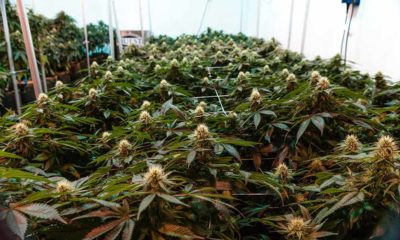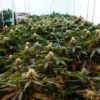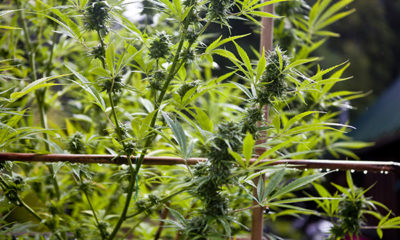
Cannabis
POT Highlights New Developments in Cannabinoid Science
Researchers, physicians and educators explore the healing potential of cannabis at the annual Patients Out of Time conference.
Imagine sitting in the audience at a speaker panel that includes some of the brightest minds in cannabinoid science and having answers shouted from the crowd. “Clobozam!” an audience member exclaims when the panel is asked about what drugs might have a negative interaction when combined with cannabis. At first you may think it’s rude heckling, then you notice the response came from esteemed neurologist and medical scientist Dr. Ethan Russo. This is only one example of the marijuana mind melding at the 11th National Clinical Conference on Cannabinoid Therapeutics hosted by Patients Out of Time last week.
Founded in 1995, Patients Out of Time, is an educational non-profit dedicated to exploring the therapeutic applications of cannabis. The organization brings together a pool of “patients, policy makers, advocates and activists” to share cutting-edge research at its annual conference. This year’s event was hosted from May 18-20 in Berkeley, California.
“With therapeutic cannabis applications cut out of medical and nursing school curricula since the late 1930s, need for this education is universal,” the organization states on its website. “To fill this void, Patients Out of Time identifies current cannabis research being conducted worldwide and invites scientists and clinicians to present their findings at an accredited educational forum.”
During the multi-day event, attendees were inundated with information. Presentations touched upon a number of trending topics in the cannabis conversation including using cannabis as a harm reduction agent for the opioid epidemic; medical cannabis use with senior patients; cannabis and cancer treatment and exploring cannabis as a remedy for those in the military who suffer from PTSD. Although many of the speakers covered complex scientific material, there was also several lighthearted moments as participants and speakers shared their own personal history with the plant, some even over a joint on the lawn area of DoubleTree by Hilton while catching a view of the boats in the Berkeley Marina.
On Friday, Juan Sanchez-Ramos, a professor of molecular pharmacology and physiology at the University of South Florida, gave a presentation on endocannabinoids in the ageing brain as well as in neurogenerative diseases. Cannabinoids, whether they originate from within the human body (endocannabinoids) or from plants such as cannabis (phytocannabinoids), primarily interact with two receptors, CB1 and CB2. When Sanchez-Ramos showed a slide of the distribution of the CB1 receptor in the human brain, he expressed his own fascination with discovering more about how cannabis works, especially while under its influence.
“It’s like looking into yourself and looking into infinity,” he said.
Sanchez-Ramos went on to demonstrate some Alzheimer’s data from animal models, while also advising caution in stating that the results of animal testing often does not transfer well to human subjects.
“Men are not mice, or mice are not men,” he said in reference to scientific trials conducted on rodents.
His research showed that mice with no CB1 receptor — identified in scientific research as “knock out mice,” because its DNA has been altered to not express specific proteins — demonstrate poor cognitive performance. In addition, knock out mice who do not possess a CB2 receptor age more quickly and start to show signs of osteoarthritis.
“It blew my mind that cannabinoids play a role in bone processes,” Sanchez-Ramos said.
These studies show cannabis might be a tool to augment the natural deterioration of cell loss in aging. While Ramos-Sanchez noted many pharmaceutical companies are looking into isolating cannabinoids for this very purpose, he believes that the delicate system of the human body is best treated with whole-plant material due to the “entourage effect,” an idea that cannabinoids work best when combined with other elements present in cannabis such as terpenes and flavonoids.
During another presentation at the event, Dr. Russo confirmed that the flooding the body with bong hits will cause the CB1 receptor to shutdown, resulting in the poor cognitive performance that is oftentimes paired with the “stoner” stigma. Responding to an audience member’s question about using cannabis if your endocannabinoid system is already in balance, Russo expressed an affinity for another trend in cannabis, the microdose.
“It’s all related to dose,” Russo said. “I’ve always been a fan of low-dosing to affect symptoms.”
Those who are using cannabis for its psychoactive effects rather than to manage medical symptoms can develop a cannabis tolerance.
“It is important to avoid the development of tolerance,” he said.
Russo then went on to give an instance where he believes cannabinoids are best used in extremely high dosing regimens, utilizing full extract cannabis oil, stating that those who suffer from cancer need hundreds of milligrams of cannabis per day to effectively fight the disease. During the conference, many other speakers also offered insight on cannabis’ potential to mitigate the effects of a large range of injuries and illnesses.
“All evidence indicates that cannabis should be a first-line medicine, rather than a medicine of last resort,” the Patients Out of Time website states.
TELL US, how do you use cannabis as a medicine?





